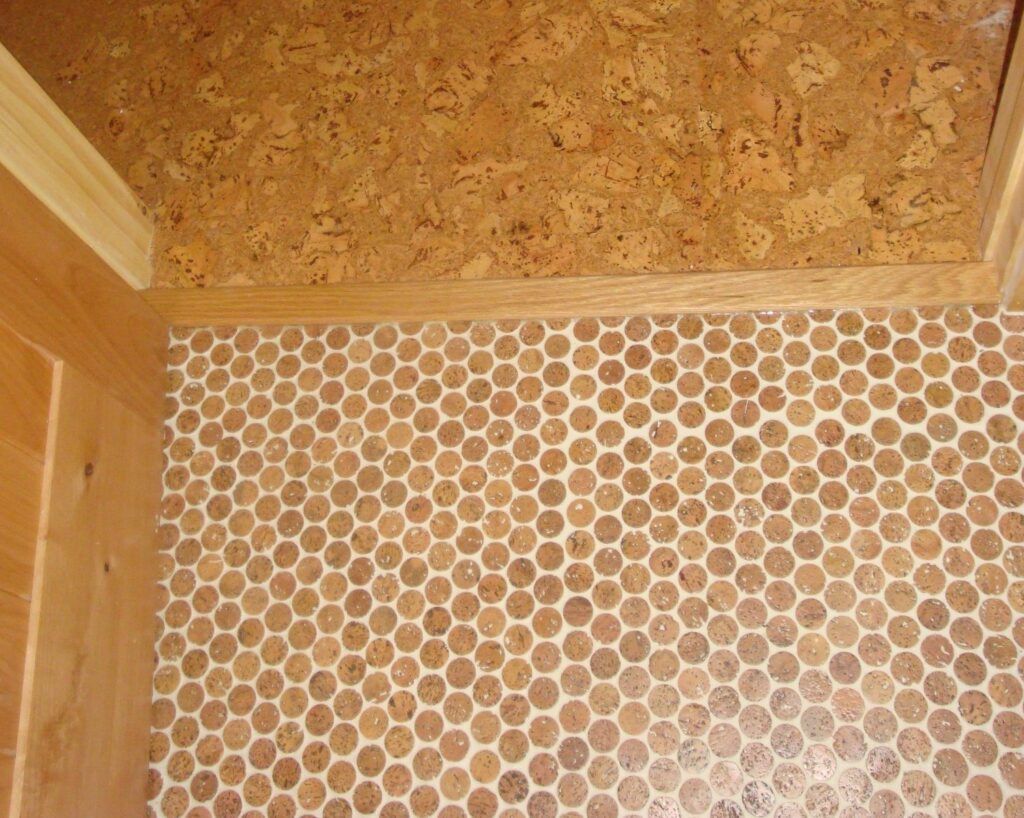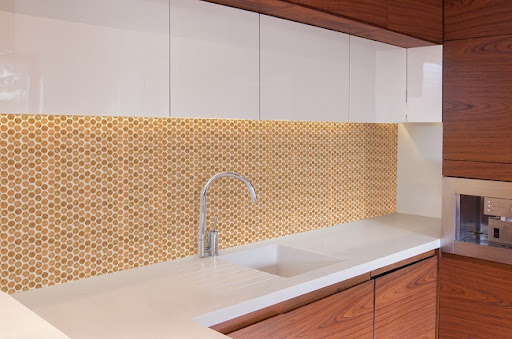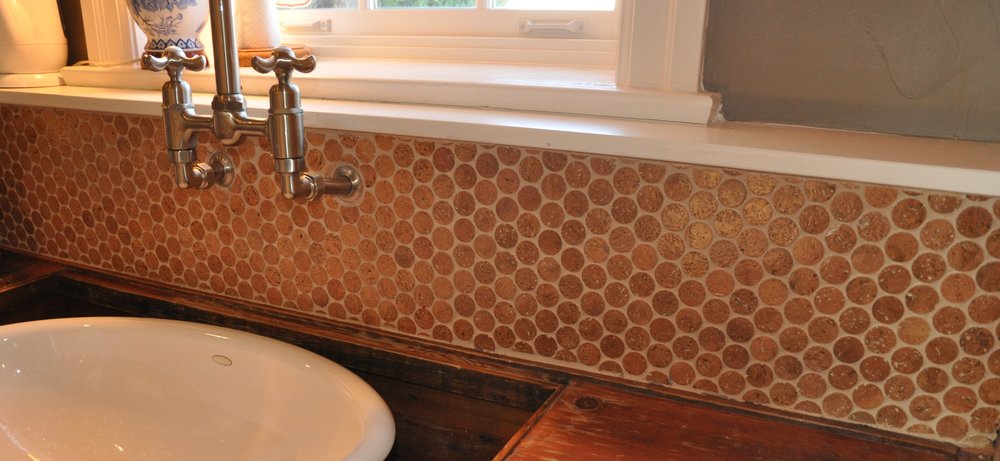Penny Style Sustainable Floors Made of Cut Wine Corks

Natural and cheap, cork is making its way into more and more home products and has long been used instead of installing standard wood floors – but rarely as a round, tile-like covering made from recycled wine stoppers (which are just the beginning of what this cork-centric company has in store).

The corks collected by Jelinek are gathered from various drop-off points where people can deposit used wine corks. Some are then ground down and reconstituted for use in ceiling, wall and floor tiles, while the ones shown here are thinly cut to create coin-shaped laminate tiles for floating on sub-floor suited for kitchen or bathroom applications (thanks to the durability and water-safe nature of cork).
The little cork circles can be left in their natural state, colored like conventional tile and arranged in various patterns or inlaid within a larger normal-tile framework.

Their online store has info on do-it-yourself applications and sells sheets of cork custom-created for a variety of purposes, from construction materials mentioned above to lamp covering and hobby material, flexible fabric, granular furniture, table coasters, place mats, hot pads, serving trays, bulletin boards, piggy banks, purses and hand bags. They’re great for backsplashes, too. Apparently, a floor is just the beginning.
While some of the covering material they offer is not cheap, the prices could be considered discount for something that takes so much work to process compared to new bamboo, vinyl, linoleum and other such typical and less-environmental material alternatives. Of course, the super-savvy DIY type could start collecting corks at home and hopefully build up enough to slice up for their own floors.

What’s cool is that cork is so sustainable. More from Jelinek:
“Cork is the outer bark of the cork oak tree or Quercus (oak) suber (cork). This remarkable tree has a bark (suberose parenchyma) which is unique throughout the plant kingdom. The cork bark can be harvested from the tree allowing new bark to grow in its place without killing or damaging the trees. This makes every tree a renewable source of raw material. The cork is harvested (peeled) from each tree time after time. The first harvest of the cork bark occurs approximately 20 years after a sapling is planted. After each harvest the cork tree fully regenerates its bark and is harvested every 9 to 10 years until the tree is about 200 years old. When the aged tree is removed, two new saplings are planted in its place, ensuring the cork forest continues to flourish and expand. The cork oak tree also reproduces off-springs naturally by dropping acorns that seed themselves and mature into productive trees.”




